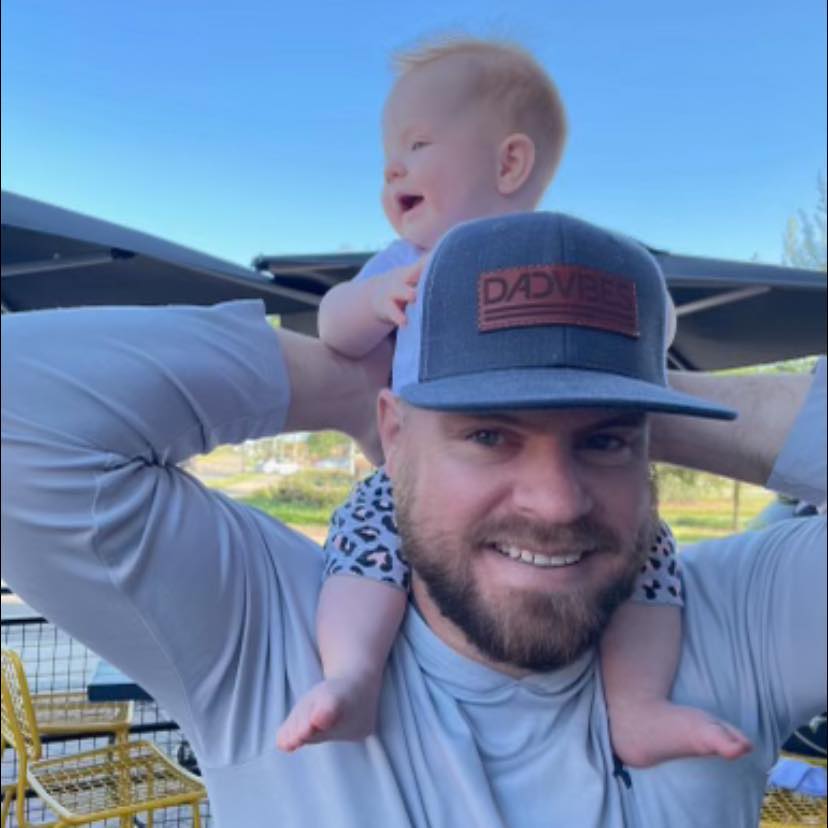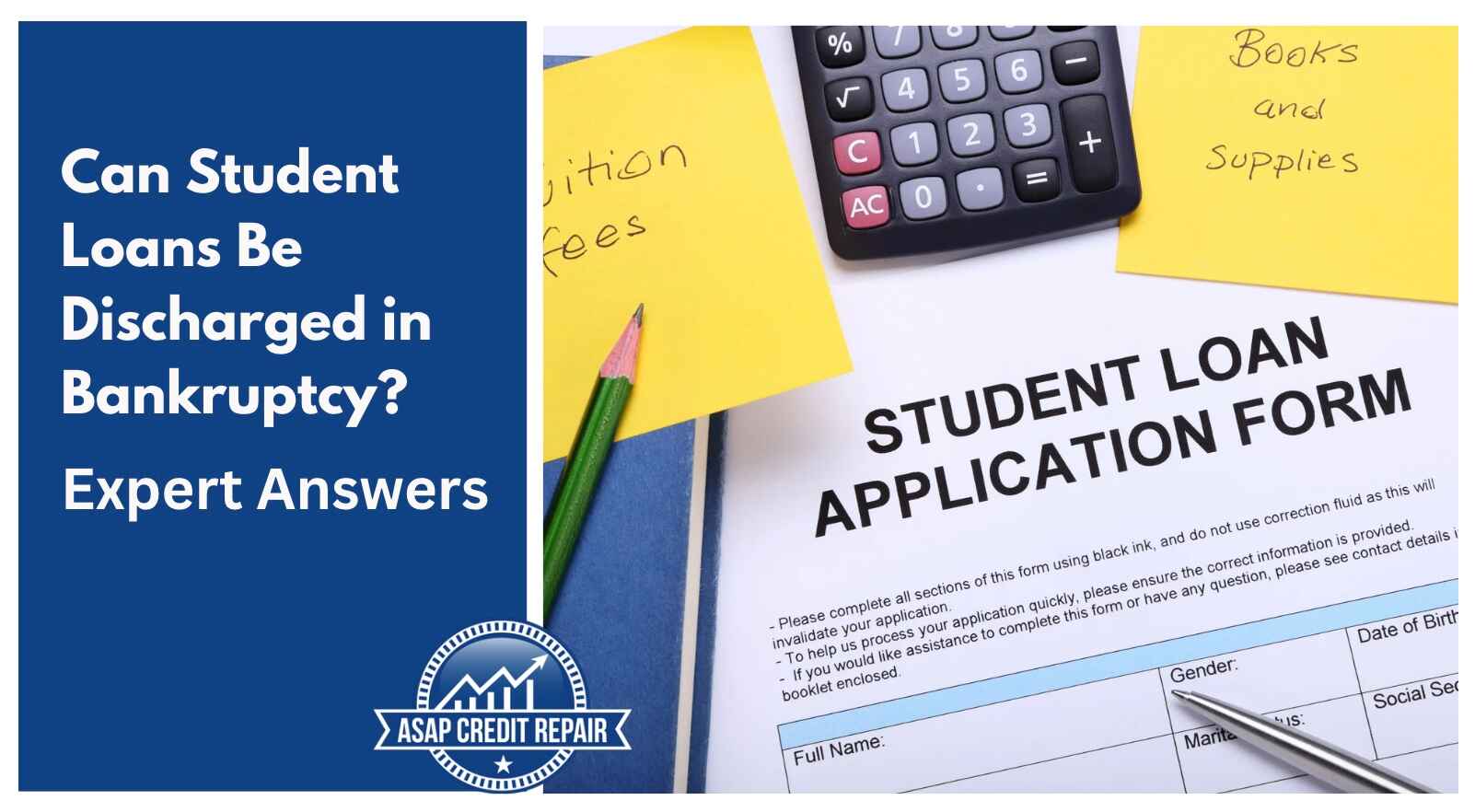Can student loans be discharged in bankruptcy? Yes, but it's more complex than wiping out credit card debt. After helping thousands of clients navigate credit challenges, I've seen the devastating impact of student loan default on credit scores and financial futures.
The good news? Recent changes make student loan bankruptcy discharge more achievable than ever before.
Let me share what you need to know to make an informed decision.
What is a Student Loan Bankruptcy Discharge?
Federal student loan discharge through bankruptcy is possible, but only under specific conditions. Unlike other debts, student loans require extra steps and proof of undue hardship.
Here's what changed:
- The Department of Justice issued new guidelines making discharge easier
- 98% of court decisions now grant full or partial discharge
- The attestation form streamlines the process
- You can often handle this without hiring expensive lawyers
However, private student loan discharge remains nearly impossible through bankruptcy. These loans lack the federal protections that make discharge possible.
I want to share something a client experienced that shows why timing matters. David had $85,000 in federal loans and filed bankruptcy in 2021 before the new guidelines. His discharge was denied. When he refiled in 2023 using the new process, he got full discharge of his remaining $79,000 debt.
Types of Student Loans and Discharge Eligibility
Not all student loan types qualify for bankruptcy discharge. Understanding which loans you have determines your options.
Dischargeable student loans:
- Federal Direct Loans held by Department of Education
- Direct Consolidation Loans
- Certain older federal loans if consolidated into Direct Loans
Non-dischargeable student loans:
- Private student loans from banks or credit unions
- Perkins Loans (in most cases)
- FFEL loans not held by Department of Education
- Parent PLUS loans (complex eligibility)
Check your loan types through the National Student Loan Data System (NSLDS).
This free government website shows all your federal student aid history. Many clients discover they have multiple loan types requiring different strategies.
Understanding the Undue Hardship Standard
The undue hardship test determines whether you qualify for student loan bankruptcy. Courts use the Brunner test, which has three parts you must prove:
1. Financial inability to pay: You cannot maintain a minimal standard of living while making loan payments. This means your essential expenses exceed your income after loan payments.
2. Persistent hardship: Your financial situation won't improve significantly in the foreseeable future. Age, disability, or lack of job prospects support this element.
3. Good faith effort: You've tried to repay your loans through available programs and options before seeking bankruptcy relief.
One client recently shared her successful discharge story. Maria had been unemployed for six years due to chronic illness, made payments when possible, and tried income-driven repayment plans. The court found all three elements met and discharged her $47,000 debt completely.
How Late Payments Impact Your Student Loan Options
Late payments on student loans create cascading problems that extend far beyond your credit report. As a credit repair expert, I've seen how missed payments limit your options and complicate bankruptcy cases.
Late payment consequences include:
- Credit score damage lasting seven years
- Default status after 270 days of non-payment
- Loss of eligibility for deferment and forbearance
- Wage garnishment without court orders
- Tax refund seizure by the government
- Difficulty qualifying for income-driven repayment plans
Late payments also affect your bankruptcy case. Courts consider your payment history when evaluating good faith effort. Consistent late payments without attempting alternatives can weaken your discharge claim.
I worked with a client whose late payment history with ConServe initially hurt his case. However, we documented his job loss, medical bills, and attempts to contact his servicer. This evidence of good faith effort despite late payments convinced the court to grant partial discharge.
The Step-by-Step Student Loan Bankruptcy Process
Filing bankruptcy on student loans requires following specific procedures beyond your main bankruptcy case.
Here's the detailed process I guide clients through:
Step 1: File Your Bankruptcy Case
Choose between Chapter 7 or Chapter 13 bankruptcy based on your income and assets. Most clients prefer Chapter 7 for its speed and fresh start benefits.
Step 2: File Adversary Complaint
This separate lawsuit within your bankruptcy case specifically targets your student loans. You'll need:
- Complete NSLDS report listing all federal loans
- Formal complaint document filed with bankruptcy court
- Filing fee (or fee waiver if you qualify)
Step 3: Serve Required Parties
Mail copies of your complaint to:
- U.S. Attorney for your district
- Attorney General of the United States
- Department of Education (loan servicer)
- U.S. Trustee for your region
Step 4: Complete Attestation Form
This detailed form proves your undue hardship claim through:
- Income and expense documentation
- Evidence of persistent financial problems
- Proof of good faith repayment efforts
The attestation form is crucial because it standardizes how courts evaluate discharge requests. Before 2022, judges used inconsistent standards that made discharge unpredictable.
Proving Undue Hardship Through Documentation
Success in student loan bankruptcy depends on thorough documentation of your financial situation. The attestation form requires specific evidence I help clients gather.
Income documentation needed:
- Recent pay stubs or unemployment benefits
- Social Security or disability statements
- Tax returns for past two years
- Bank statements showing irregular income
Expense documentation required:
- Housing costs (rent/mortgage, utilities)
- Transportation expenses (car payment, insurance, gas)
- Medical expenses including insurance premiums
- Basic living costs (food, clothing, personal care)
- Child care or dependent support costs
Good faith effort evidence:
- Payment history from loan servicer
- Applications for income-driven repayment
- Deferment or forbearance requests
- Employment search documentation
- Communication records with servicers
Let me tell you about James, who initially thought he didn't qualify because he had some income. After we documented his $2,800 monthly expenses against his $2,200 income, plus his progressive illness limiting future earning capacity, the court granted full discharge of his $52,000 Keystone student loan debt.
Recent Changes Making Discharge More Achievable
The 2022 DOJ guidelines revolutionized student loan bankruptcy by creating clear standards for discharge. These changes address previous inconsistencies that made discharge nearly impossible.
Key improvements include:
- Presumptions of undue hardship for borrowers over 65
- Recognition of disability as persistent hardship
- Acceptance of underemployment as financial inability
- Clear good faith standards including single payment attempts
- Streamlined process reducing need for expensive attorneys
Statistical improvements:
- Pre-2022: Less than 3% discharge success rate
- Post-2022: 98% full or partial discharge rate
- Average discharge amount: $73,000 per borrower
- Processing time reduced from 18 months to 6-8 months
These changes reflect growing recognition that student debt crisis requires realistic solutions. Courts now understand that permanent financial hardship justifies discharge regardless of degree completion.
Alternatives to Bankruptcy for Student Loan Relief
Before pursuing student loan bankruptcy, consider other relief options that might resolve your situation without court involvement.
Income-driven repayment plans:
- Payments based on discretionary income
- Loan forgiveness after 20-25 years
- Four different plan options available
- Can result in $0 monthly payments for lowest earners
Public Service Loan Forgiveness (PSLF):
- Complete forgiveness after 120 qualifying payments
- Must work for qualifying government or nonprofit employer
- No tax consequences for forgiven amounts
- Limited waiver expanded eligibility through 2024
Other forgiveness programs:
- Teacher loan forgiveness up to $17,500
- Military service discharge benefits
- Disability discharge for permanent disability
- Closed school discharge for certain situations
I recently helped a client avoid bankruptcy by qualifying for income-driven repayment. Her payments dropped from $847 to $73 monthly, and she'll receive forgiveness in 18 years. This solution preserved her credit while providing affordable payments.
When Bankruptcy Makes Sense for Student Loans
Student loan bankruptcy isn't right for everyone, but specific situations make it the best option for financial recovery.
Consider bankruptcy when:
- You have qualifying federal loans only
- Income-driven repayment still creates unaffordable payments
- Your financial situation won't improve significantly
- You've exhausted other relief options
- Late payments have already damaged your credit severely
Bankruptcy advantages:
- Complete elimination of discharged debt
- Fresh financial start
- Protection from wage garnishment and asset seizure
- Relief from collection calls and credit damage
- Ability to rebuild credit immediately after discharge
Potential drawbacks:
- Bankruptcy appears on credit reports for 10 years
- May affect future employment in financial sectors
- Requires court proceedings and documentation
- No guarantee of discharge approval
- Private student loans remain unaffected
Life After Student Loan Discharge
Successfully discharging student loans in bankruptcy provides enormous financial relief, but rebuilding requires strategic planning. I guide clients through post-discharge credit recovery.
Immediate post-discharge steps:
- Obtain copies of discharge orders for your records
- Verify credit reporting reflects discharged debts
- Begin rebuilding credit with secured credit cards
- Establish emergency fund to avoid future debt problems
- Monitor credit reports for accuracy
Long-term financial recovery:
- Focus on on-time payments for all remaining obligations
- Keep credit utilization below 30% on any new credit
- Avoid taking on new student loan debt without careful consideration
- Build diversified credit history through different account types
- Consider credit counseling for ongoing financial education
One client discharged $68,000 in student loans and focused on credit rebuilding. Within two years, her credit score improved from 480 to 720, and she qualified for a mortgage at competitive rates.
Expert Recommendations for Your Situation
As a credit repair specialist who's guided hundreds through the student loan bankruptcy process, here's my honest assessment of when this strategy makes sense.
You're likely a good candidate if:
- Your student loan payments exceed 20% of income
- You have significant medical debt or disability
- You're over 50 with limited career prospects
- Income-driven plans still create financial hardship
- Your loans are primarily federal Direct Loans
Consider alternatives first if:
- You have significant private student loans
- Your income is likely to increase substantially
- You haven't explored all repayment options
- Your financial hardship is temporary
- You're concerned about bankruptcy's credit impact
Red flags that suggest waiting:
- Recent late payments without good cause documentation
- Lack of good faith repayment efforts
- Primarily private student loan debt
- Ability to make payments with lifestyle adjustments
- Hope for broad student loan forgiveness legislation
The decision requires careful analysis of your complete financial picture. Don't let desperation drive you toward bankruptcy if better alternatives exist for your situation.
Ready to explore your student loan relief options? Contact ASAP Credit Repair for a free consultation and personalized strategy to address both your student loans and overall credit health.
About the Author: As a certified credit repair specialist with extensive experience in student loan matters, I've helped thousands of clients navigate complex debt situations and achieve financial freedom. This article reflects current bankruptcy law as of September 2025 and should not replace personalized legal or financial advice.

